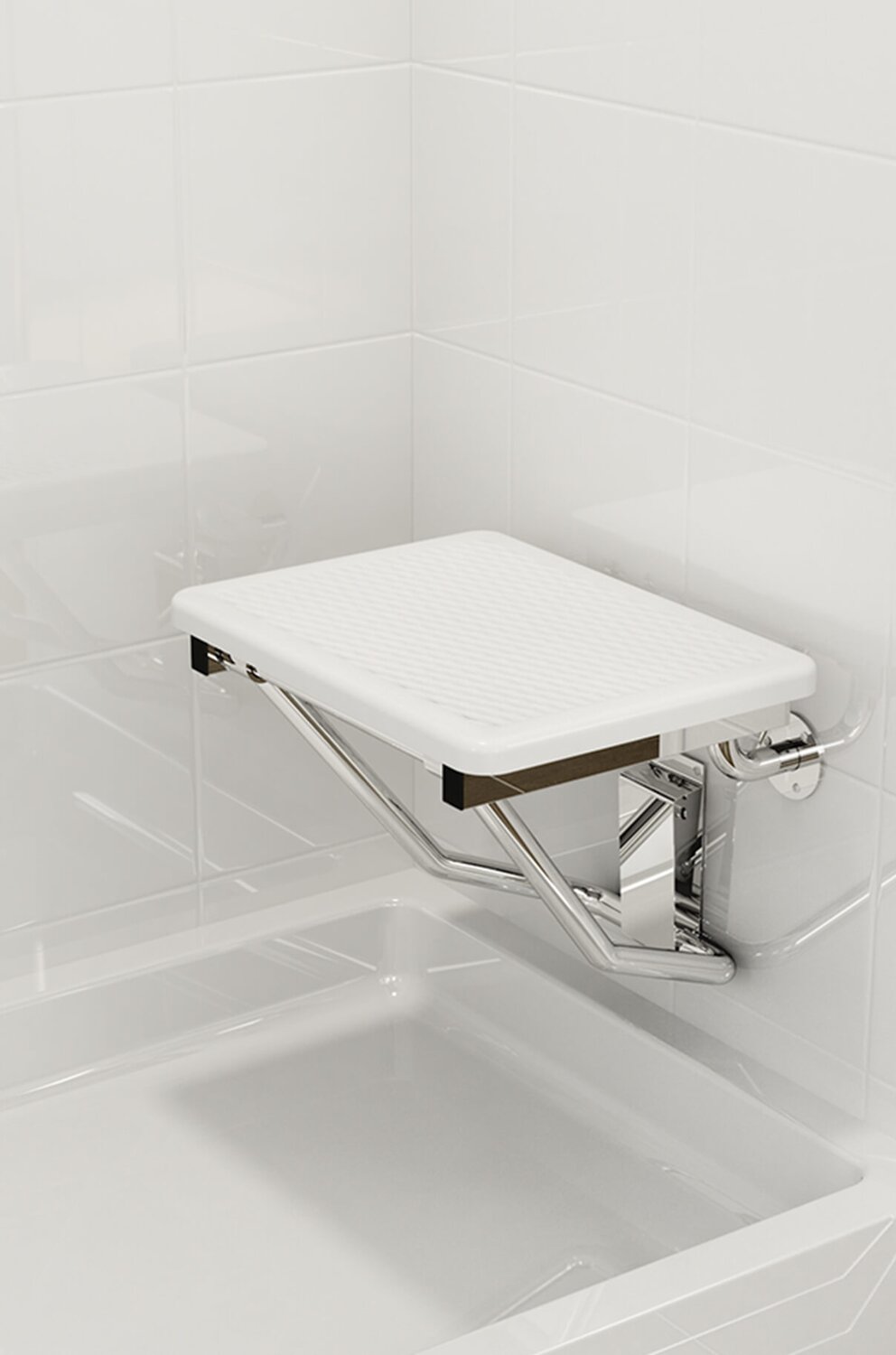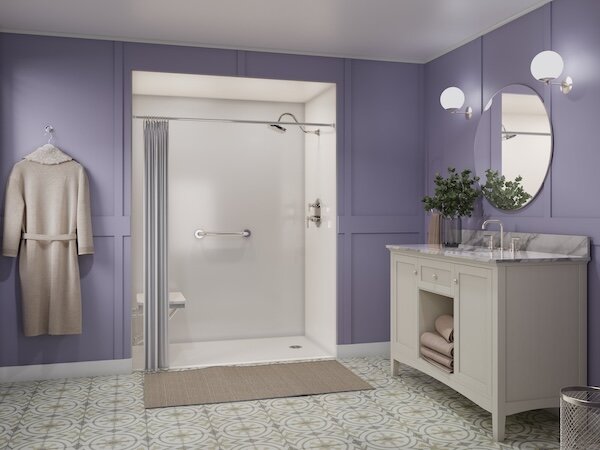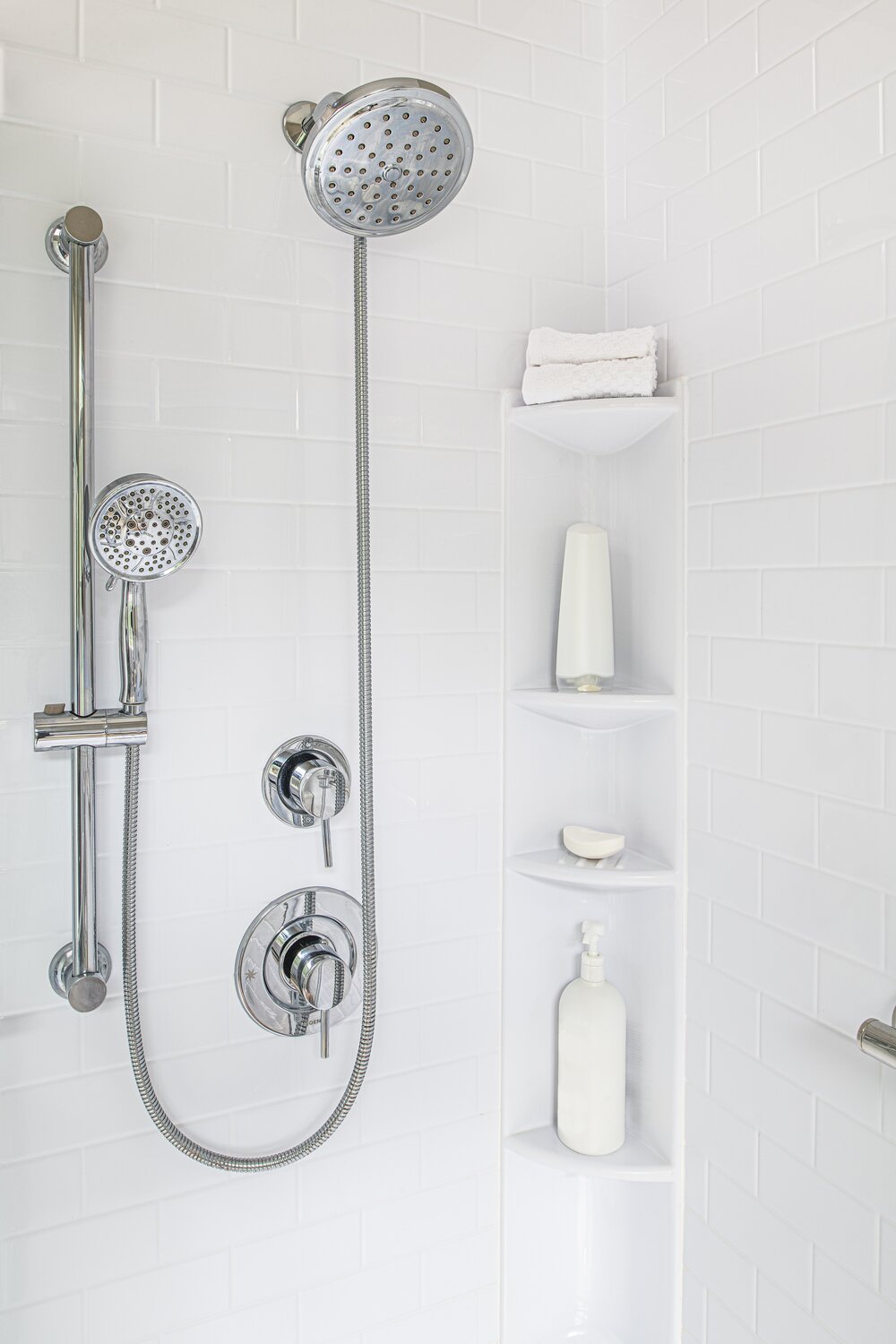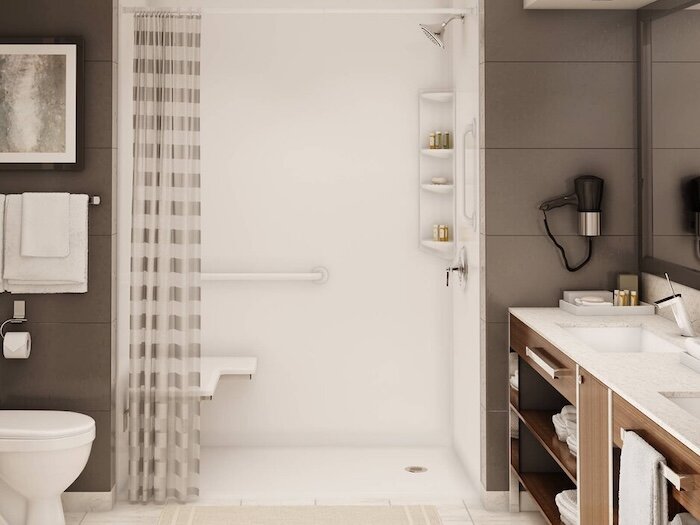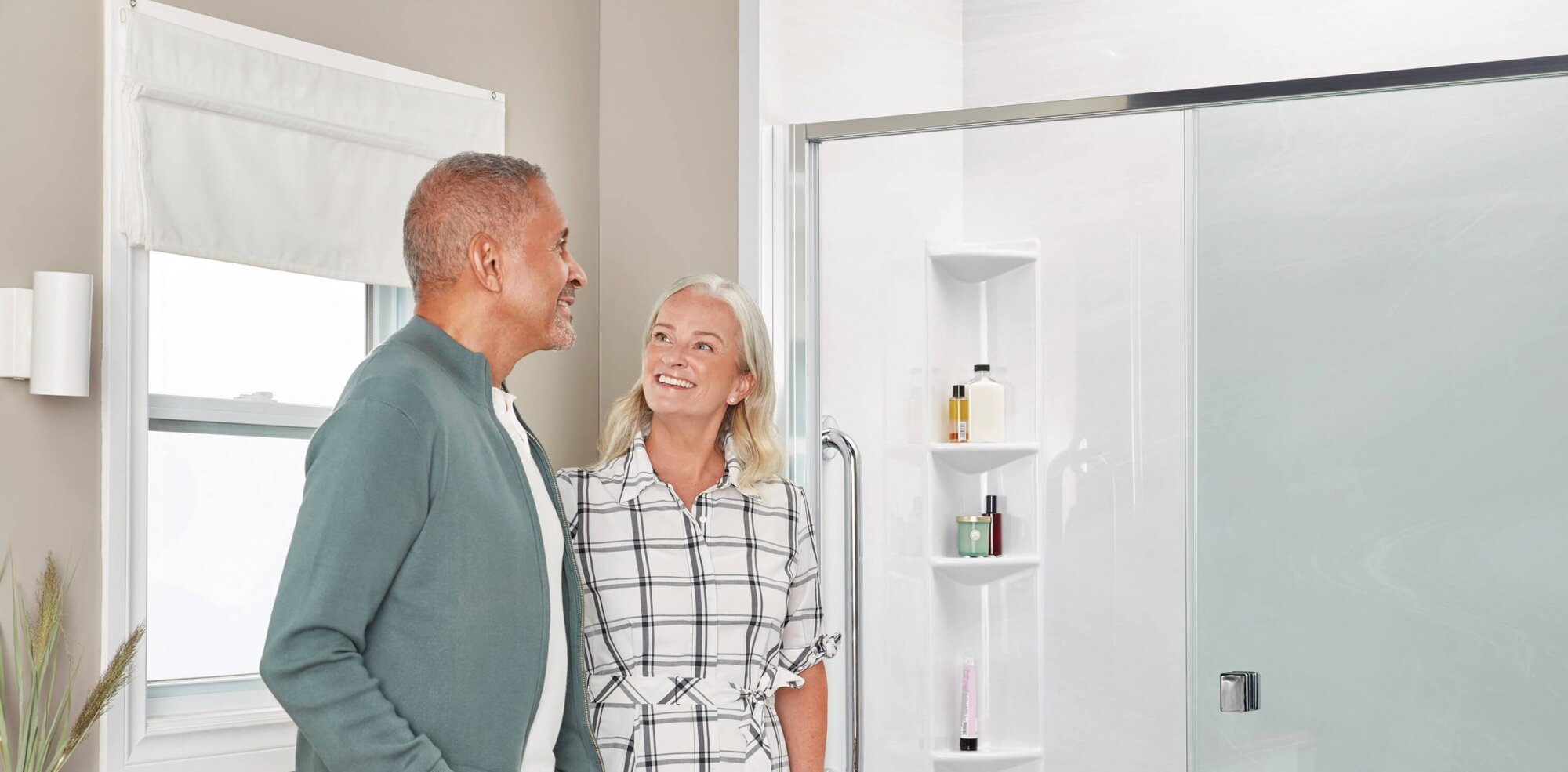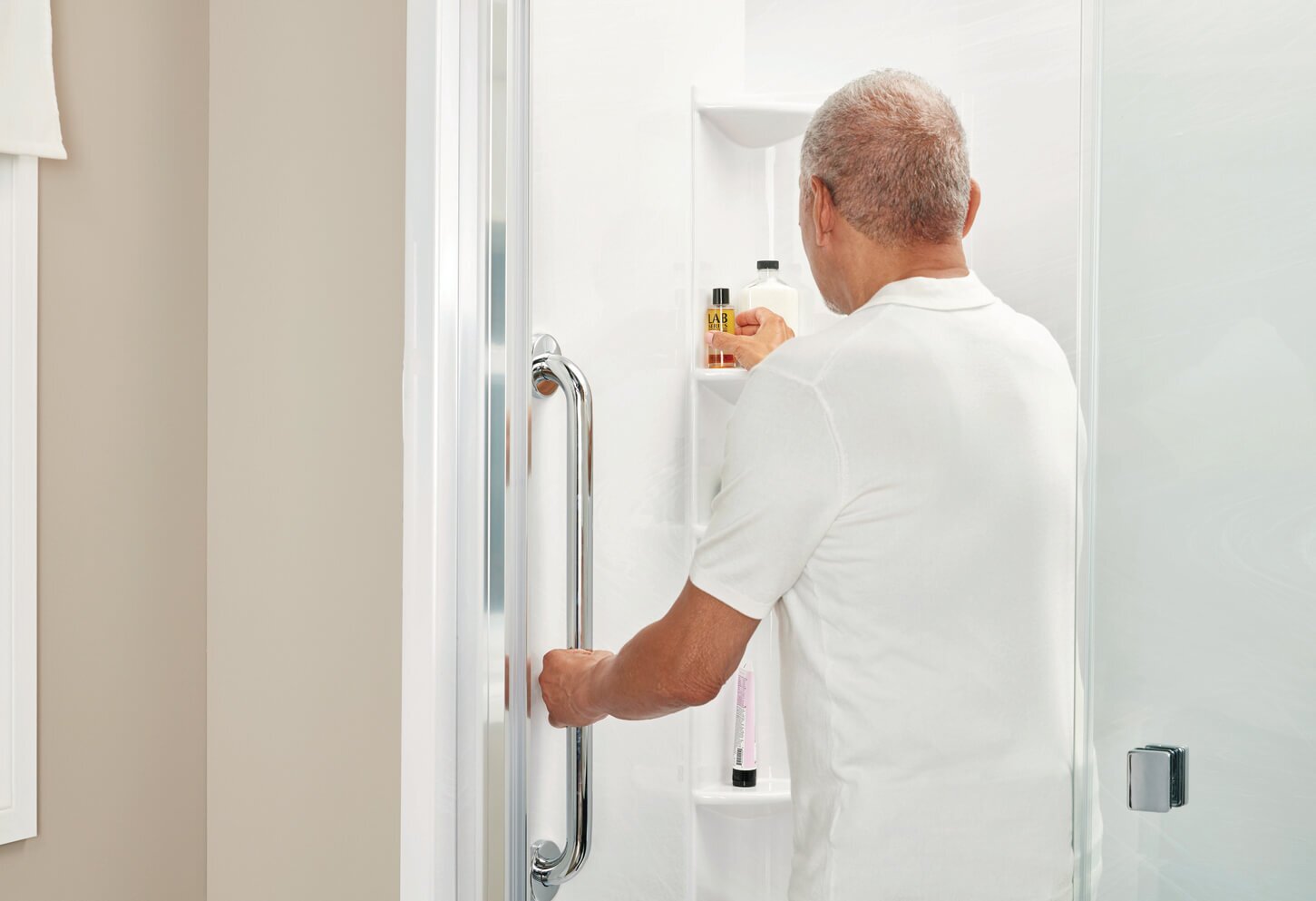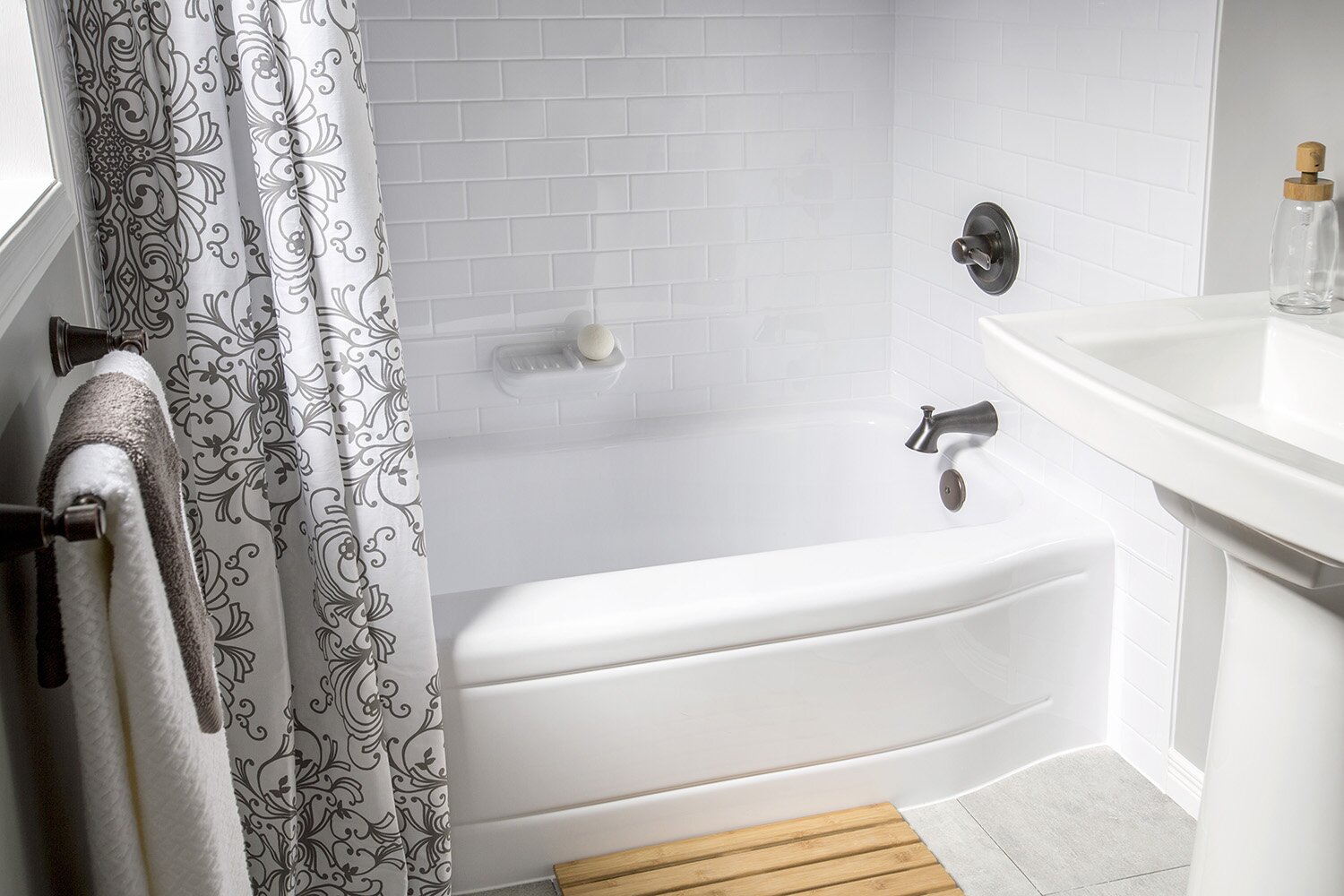Wellness
How to Improve Bathroom Safety for Seniors
You might be surprised to know that of all the rooms in your house there’s one room that’s universally considered the most dangerous. If you thought it was the kitchen, think again; in fact, most injuries in the house occur from falls in the bathroom. These injuries are usually the result of wet and slippery surfaces. These surfaces create a range of hazards when getting into and out of bathtubs and showers. Inadequate bathroom design is also cause for alarm when the elderly are concerned. And for senior citizens with reduced mobility, this often results in serious and sometimes even fatal injuries. Bathroom safety equipment for seniors is vital to ensure a safe environment and reduce the risk of serious injuries like broken bones or fractures.
You might be surprised to know that of all the rooms in your house there’s one room that’s universally considered the most dangerous. If you thought it was the kitchen, think again; in fact, most injuries in the house occur from falls in the bathroom. These injuries are usually the result of wet and slippery surfaces. These surfaces create a range of hazards when getting into and out of bathtubs and showers. Inadequate bathroom design is also cause for alarm when the elderly are concerned. And for senior citizens with reduced mobility, this often results in serious and sometimes even fatal injuries. Bathroom safety equipment for seniors is vital to ensure a safe environment and reduce the risk of serious injuries like broken bones or fractures.
Did you know that, according to the National Institute on Aging, 80% of all senior citizen falls occur in the bathroom? It’s a fact of life. As we age, our sense of balance is reduced resulting in more frequent falls and tumbles. And with current medical advances, people in the US are now living longer than ever before. The average life expectancy has increased to almost 80 years. Based on current projections, the numbers show no sign of decline.
Shower and bathroom safety for the elderly is a necessity in every household. Not only does it help the aged, it reduces the possibility of injuries in younger people as well. Don't be complacent when it comes to the bathroom. Several adjustments can be made to help transform the most dangerous room in the home into one of the safest.
Common Hazards in the Bathroom
Even though water and slippery surfaces seem to be the most common culprit for bathroom injuries, many other obstacles produce their fair share of injuries. With reduced movement, reduced vision, and slower reaction times, seniors are more likely to have trouble with bathroom settings and conditions. Some common hazards that could result in potential injuries include:
- Water on the bathroom floor
- Polished, slippery tiling
- Unsecured bathmats
- Room lighting that is too dim or low
Some of these problems can be fixed with simple adjustments to the bathroom: rearrange the shelving, add seating, or increase lighting levels. Some solutions, though, may require an overall rethink of the bathroom design and could include major renovations. Whether the changes are large or small, any improvement families can make will result in lowering the potential for injury of the elderly.
One of the first steps to take is to assess the individual requirements for elderly bathroom users. Do they have trouble with movement? Is eyesight a problem? Is lightheadedness common? What areas in the bathroom will they need easier access to? Once you have identified some of the potential problem areas you will have a clearer understanding of what you need to change to create a safer bathroom.
Install Grab Bars & Shower Safety Handles
Water and slippery surfaces will always be present in the bathroom. It wouldn't be a bathroom without water! Even though the best practice is to remove all possible conditions that create slippery surfaces, it might not always be possible in showers and bathtubs. To help with balance, you can install grab bars and shower safety handles in almost all areas of the bathroom. Commonly used to help people get in and out of showers or bathtubs, grab bars are also helpful near the toilet to aid in sitting and standing. Sometimes simply moving around the bathroom can be made easier with a bar to hold on to. It reduces the need to rely on things like unstable towel bars and sink tops for balance.
Be aware that not all grab bars meet the exact specifications required to bear the weight of repeated usage. The length of the bar, the diameter, and the bar position are also factors you need to consider. If you are installing a grab bar, make sure it is ADA compliant to give you peace of mind.
Use a Shower Chair or Shower/Tub Transfer Bench
For seniors with problems standing or balancing, a simple solution is to use a waterproof chair in the shower or bathtub. Often referred to as bath chairs, shower stools, or shower benches, they are available in a variety of sizes and often made of plastic with a non-rusting metal frame. They can be wheeled into the shower or placed in the bath and later removed when not in use. Make sure that the chair is stable and, if necessary, you can add a non-slip mat underneath for extra safety. Some chairs also include added safety features like safety belts, footrests, armrests and backrests.
Of course, not all seniors require a standard shower chair. If they are able to get into and out of the shower by themselves, they may only need the added reassurance of a corner seat or a simple shower bench.
Install a Walk-in Shower
Although not the cheapest solution, replacing an existing tub with a walk-in shower can truly accommodate seniors or those with disabilities. A walk-in shower, also called easy-access shower, is made specifically for ease of entry and exit. Since a bathtub’s edge can be pretty hard to navigate for someone with reduced mobility, walk-in showers are a perfect solution because they have a very narrow edge, and can even be edge-less, making it easy for wheelchairs to roll in and out the shower.
Avoid Throw Rugs & Place Non-Slip Mats in the Bathroom
Using bathroom mats might add that extra warm and cozy feeling when you get out of the shower or bathtub, but they are also one of the most dangerous items in the bathroom. The potential for an unsecured mat or rug to slip is very high, especially when you add a wet floor to the picture. For senior safety, the best place to start is removing any mats that aren’t non-slip or haven't been fastened to the floor. Instead, look for safety bath mats that have a rubberized backing that sticks securely to the floor. They should be thinner and less bulky than traditional bath mats, taking extra care that the edges don't lift up to trip over, as well as being easier for walkers to roll over.
Consider Flooring Alternatives
Floor tiling is the standard in most bathrooms but it’s seldomly installed with senior citizens in mind. A glossy tile can be extremely slippery when in contact with water, which is why most floor tiles have a matte finish. However, this might not be enough to reduce accidents. Textured, non-slip tiles are now available for bathroom and shower floors. Another idea is to add non-slip decals to bathtubs and showers. If you want to stay away from using tiles, there are also a number of bathroom floor alternatives to consider – non-slip vinyl, linoleum, or bamboo and cork flooring.
Install a Raised Toilet Seat
Not only can seniors have trouble with bathtubs and showers, but often accidents happen when trying to sit on or stand up from the toilet. Grab bars placed next to the toilet can help with getting up or down, but another helpful idea is to install a raised toilet seat. Most raised toilet seats are designed to conform to standard US and Canadian toilet sizes and are put in place easily, thereby reducing the cost of having to install a completely new toilet. Depending on the particular type of disabilities a user has, you can find a model to suit your needs: basic raised, locked, with support arms, variable height adjustment, and combined with a sturdy frame. As with all bathroom solutions, make sure you use an ADA-approved model. This ensures that the products have been rigorously tested to reduce potential accidents.
Put Essential Items Within Easy Reach
Probably the quickest and easiest way to make a bathroom safer is to ensure that all products and items needed during a bathroom visit are easily accessible. Shampoos, soaps, conditioners, and other toiletry items need to be removed from high, hard-to-reach places and placed at body level. Use a simple shower caddy to organize shampoos and soaps, and create space on the lower shelves to place things like combs and brushes. You can also use simple plastic drawers that are easier to reach than high cupboards.
Make Sure Lighting is Adequate
Although we all like to have a more subtle light in the bathroom for that softer look, seniors with vision problems often have a very hard time in low light situations. If you combine the reduced lighting and other factors like steam, accidents are bound to happen. The perfect lighting setup needs to be bright enough so the elderly can see what they are doing, but not too bright that it dazzles or blinds them, which often could result in dizziness and a loss of balance. Replace existing low-light bulbs with brighter bulbs to create a more comfortable and visible environment.
Hand-Held Shower Head
Having the correct shower equipment can help reduce the risk of falling in the shower or bathtub. Flexible handheld shower wands now come with several features specifically designed for older users to reduce unnecessary movement and effort.
Turning the shower on and off is often a problem for seniors with arthritis, so look to install a shower handle with an on/off switch. Some have gentler spray head patterns to adjust and customize the water pressure, which helps with seniors that have sensitive skin. Consider a longer shower hose length for extra movement. A hand-held showerhead is a simple-to-install idea for increased shower safety.
Ergonomic Faucets
Another bathroom fixture that is often hard for arthritis prone hands to use is the faucet. Common bathroom faucets may look simple enough to use but with reduced hand and arm strength, they can be difficult for the elderly to turn on or turn off. Look for ergonomically designed faucets with smooth, easy-to-turn functions. Remember that hot and cold markings on the faucets need to be obvious and clear since many seniors with reduced vision can easily mistake scalding hot for cold. You can also help prevent accidental burns by reducing the water heater thermostat to a lower setting.
Weighted Shower Curtain
A simple, yet often overlooked, solution to keeping the floor clear of water is to use weighted shower curtains. Only slightly different from normal ones, the weights in the curtain hem will help keep the curtain in place and reduce the amount of splash on the floor, reducing the risk of falls. If you have a glass shower cabinet, the elderly also need to be reminded that they should not lean or place their weight on the glass door. If the doors are made of breakable glass, then consider replacing them with safety glass. You don't want glass doors shattering and causing serious injuries.
Create a Safer Bathroom for Seniors
Following even a few of the above suggestions can help prevent a bathroom from becoming a dangerous environment for an elderly family member or friend. Assess the individual requirements for elderly bathroom users and make plans to replace or remodel areas that are potential hazards. Remove old bathmats and replace them with non-slip options, look at textured tiling in and around the shower, install ergonomic and clearly marked faucets, increase lighting, create easy-to-reach shelving, or even install a walk-in shower. A few simple bathroom changes can make day-to-day living for the elderly easier, reduce the risk of injuries, and give peace of mind to the entire family.
LIKE WHAT YOU SEE?
Share with a friend


